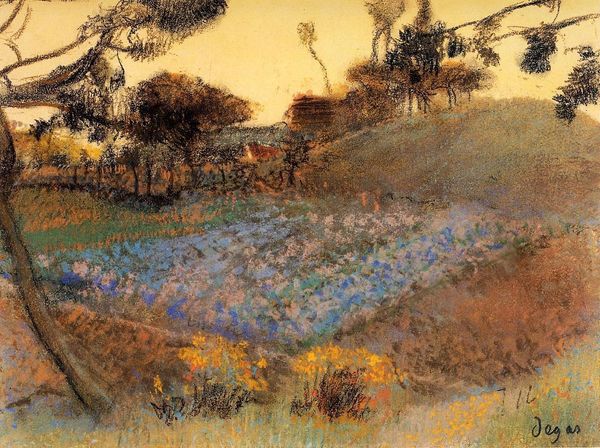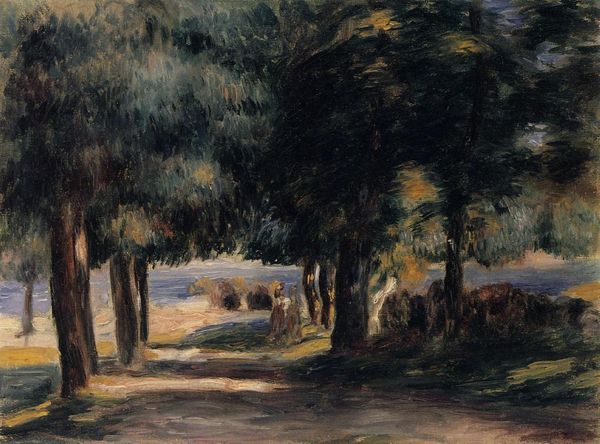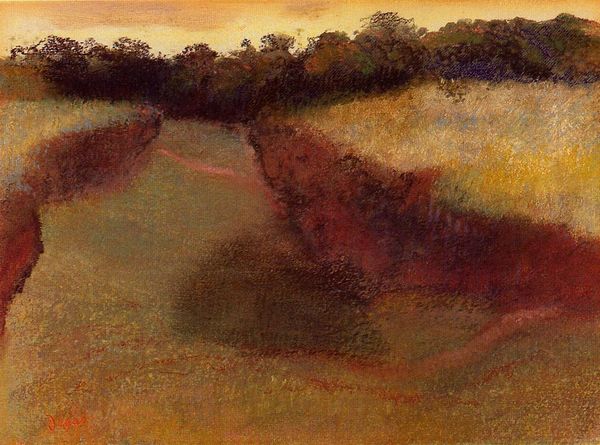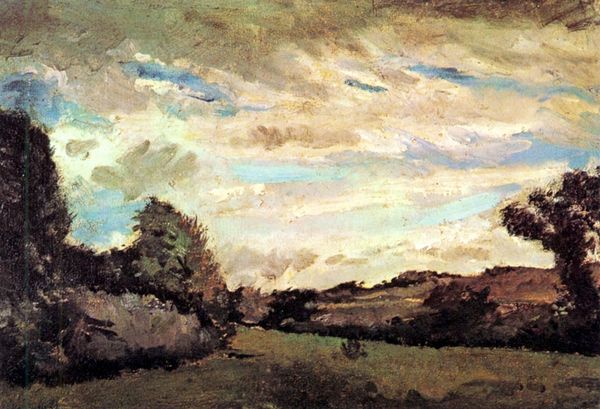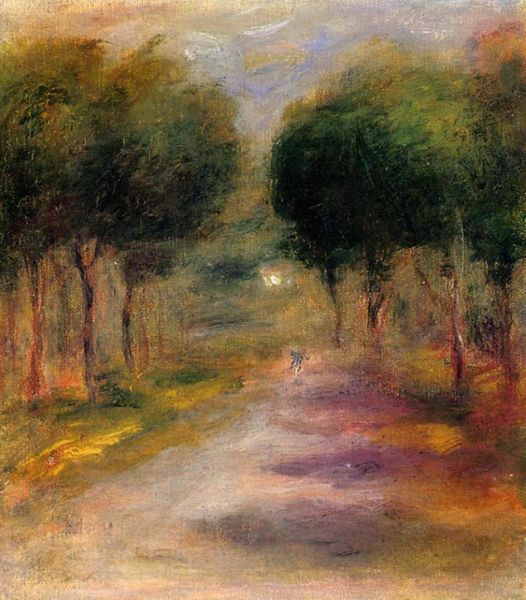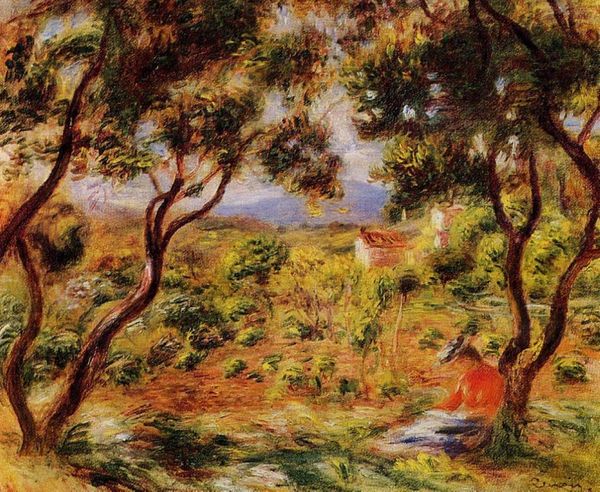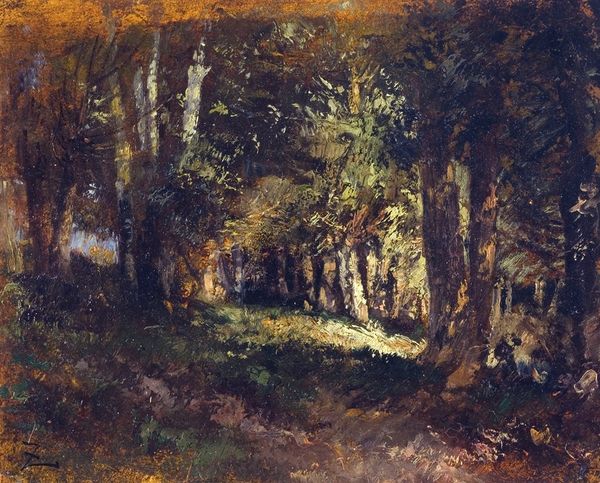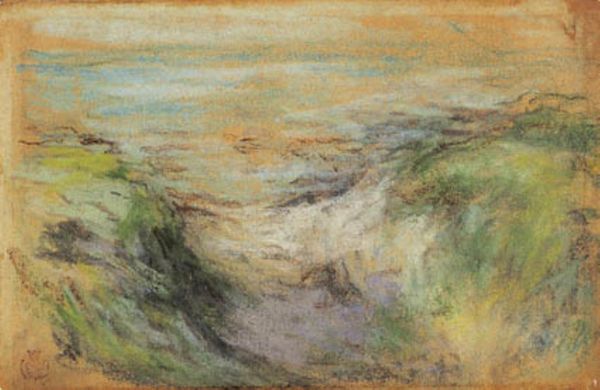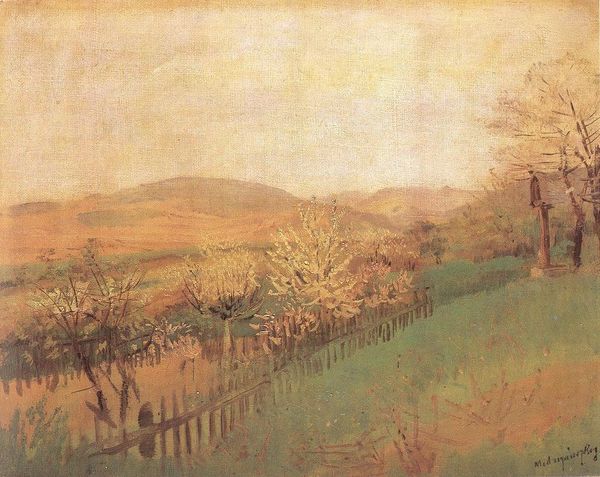
plein-air, oil-paint, impasto
#
plein-air
#
oil-paint
#
landscape
#
oil painting
#
impasto
#
intimism
#
post-impressionism
#
watercolor
#
realism
#
sea
Dimensions: 49 x 59.8 cm
Copyright: Public domain
Editor: We’re looking at “Landscape by the Sea” painted by Edgar Degas in 1898. It’s oil paint, seemingly applied alla prima, creating an interesting textured surface. I'm struck by its intimacy. What's your interpretation of this piece? Curator: Well, focusing on the material realities, it's fascinating how Degas, known for his ballerinas, diverged into plein-air landscape. This was at the end of the 19th century. Oil paint was becoming readily available in tubes allowing for a radical shift to working outside, rather than in the confines of the studio. Consider how the accessibility of the materials themselves, the tubes of paint, democratized landscape painting and fostered a different relationship between artist, subject, and production. What do you think about Degas engaging in "realism" when he also embraced Impressionism? Editor: That's an interesting point. Perhaps he didn't fully abandon realism even when experimenting with impressionistic techniques. Does the application of paint have further significance? Curator: Absolutely. Notice the thick impasto in certain areas. The way the paint is worked emphasizes the labor involved and, more subtly, his command of a new industrialized paint production, further underscoring its physicality. It speaks to a changing attitude toward artistic labor and value during that period. Degas blurs boundaries here. Is it landscape, is it studio work, is it realism? It reflects a move to considering the materiality and consumption of painting in late 19th century artistic production. Editor: So it's not just a landscape; it reflects broader cultural shifts. I will keep an eye on material choices now. Thank you. Curator: Precisely. It’s a window into the relationship between artistic production, materials, and societal changes. A worthy point to contemplate in art!
Comments
No comments
Be the first to comment and join the conversation on the ultimate creative platform.

